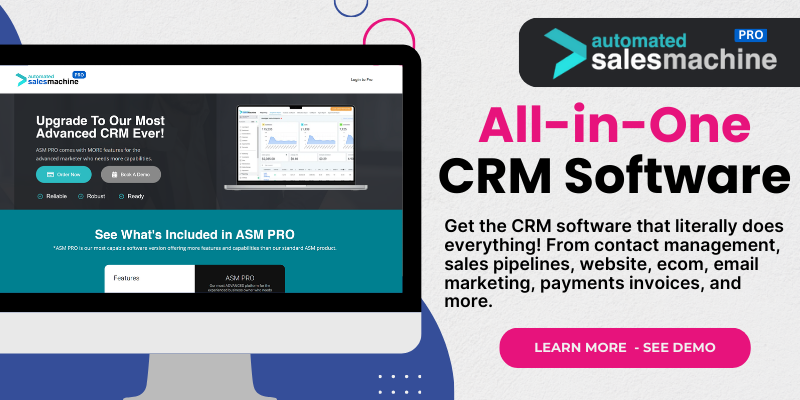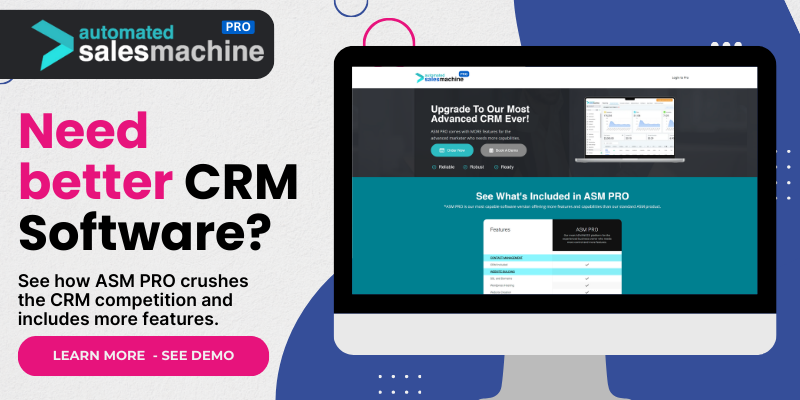Hey there! Today, I’m super excited to dive into a topic that’s crucial for businesses of all shapes and sizes—Customer Relationship Management (CRM) software. As someone who has worked with various types of CRM systems over the years, I’ve seen firsthand how they can revolutionize the way businesses interact with their customers. Let’s break this down into specific types of CRM software so you can figure out which might be the best fit for your needs!
Operational CRM
First up is Operational CRM. This type primarily focuses on automating and managing customer-facing processes. It’s all about streamlining operations so that your teams can work more efficiently.
Sales Automation
Sales automation is a game changer. It helps your sales team track leads, manage contacts, and automate the sales process. I remember when I first implemented a sales automation feature in my last role; it took a ton of administrative overhead off my plate. My team could focus on what they do best: selling!
By using sales automation tools, you can prioritize leads based on their interest levels. It saves time and leads to quicker conversions. Trust me; if you’re not using this feature yet, you’re likely leaving money on the table!
Additionally, most sales automation tools come with analytics, allowing you to track performance. Watching those numbers can be both exciting and heartbreaking, but it will always lead you to better strategies.
Marketing Automation
Marketing automation is the best friend of any marketer trying to reach a larger audience without exponentially increasing their workload. I still recall the droves of emails I would have to personally send out; it was a full-time job!
With marketing automation, you can schedule email campaigns, manage social media posts, and even conduct A/B testing on your content. Imagine sending out targeted promotional emails to hundreds of potential clients without lifting a finger. It’s a beautiful thing!
Moreover, marketing automation tools often integrate with other systems, so all your data stays in one place. This is a lifesaver for maintaining consistency across campaigns and generating comprehensive reports.
Customer Support Automation
This one’s all about making sure your customers are happy. Customer support automation can include chatbots, customer feedback tools, and help desk software. When I first tried a customer support system with automated responses, I was amazed by how much faster we could address customer queries.
These tools help to ensure that no customer feels neglected, and they can significantly improve response times. It’s crucial to ensure customers get answers when they need them, right?
Once you start focusing on customer support automation, you’ll begin to even out the workload across your team, allowing them to focus on complex queries while simple issues are handled automatically.
Analytical CRM
Next, let’s chat about Analytical CRM. This type is all about data. Typically, it involves analyzing customer data to make smarter business decisions.
Customer Segmentation
One of the biggest advantages of Analytical CRM is customer segmentation. You need to know who your customers are to market effectively to them. When I first performed customer segmentation, I suddenly realized I had overlooked whole demographics that were eager to buy!
By categorizing your customers based on their behaviors and purchase history, you can tailor your marketing strategies to appeal to specific groups. This personalization greatly enhances engagement.
With detailed customer profiles, your marketing team can create targeted campaigns that resonate, and hopefully, turn into sales!
Sales Forecasting
Have you ever wanted to predict your sales for the upcoming quarter? Sales forecasting helps you do just that! An analytical CRM will give you insights based on historical data, market trends, and other key variables.
When using these insights, I’ve managed to prepare my inventory and staffing needs much better. Plus, I could proactively adjust my marketing strategies based on expected sales numbers.
Not only does this feature streamline operations, but it also alleviates some of the stress that comes with uncertainty in business!
Performance Analysis
Another cool feature of Analytical CRM is performance analysis. You can track various business metrics to evaluate how well your strategies are working, helping to pinpoint areas for improvement.
I can’t stress enough how vital it is to continually analyze performance data. When I first started one of my campaigns, I didn’t track performance well, and let me tell you, I didn’t get the results I hoped for.
With features that allow you to monitor campaign performance, you can continuously tweak and refine your approach for better results.
Collaborative CRM
Then there’s Collaborative CRM, which is all about sharing information across departments. In my experience, this type leads to better customer service and a more streamlined sales process.
Information Sharing
Information sharing is crucial for any business. When sales, marketing, and customer support teams share data, you create a unified approach. I was blown away when we first began sharing notes from customer interactions; suddenly, everyone was on the same page, leading to more harmonious work environments.
This sharing of information allows businesses to gather insights all in one place. It helps build a comprehensive view of each customer so that every department knows their needs and preferences.
Creating a culture of information sharing is fundamental for any business that wants to improve customer satisfaction and retention rates.
Cross-Department Collaboration
Think about how often different departments operate in silos. Collaborative CRM systems break down those barriers and foster collaboration, which can spur creativity and problem-solving.
My team often had brainstorming sessions that included members from different departments. We came up with some of our best ideas when merging perspectives from various sectors. Bringing together diverse viewpoints often leads to innovative solutions.
This approach can ultimately lead to better products and services, all because different departments jointly contributed towards a common aim.
Customer Involvement
Collaborative CRM also includes engaging customers in the feedback loop. Listening to your customers can go a long way. By involving them in discussions, surveys, or focus groups, you’ll build solid relationships.
One of my favorite memories was when I involved customers in the development of a new product. Their feedback shaped it into something users actually wanted. It was a win-win!
Ultimately, when customers feel heard and appreciated, their loyalty increases, which is what we all want, right?
Strategic CRM
Last but not least, we’ve got Strategic CRM. This type is focused on long-term goals and strategies to maintain customer loyalty over time.
Long-Term Planning
Strategic CRM is all about understanding the ultimate goal: how to keep customers happy long after the initial sale. It’s wildly important to create a plan that stretches beyond quick wins. I remember a campaign where we aimed for long-term relationships and, guess what? It worked wonders.
The focus here is on loyalty programs, personalized marketing, and ongoing engagement strategies. When customers know you value them, they’ll stick around.
By using strategic CRM, you can create structured plans that will help guide your relationship with customers for years to come. It’s all about vision.
Customer Retention Strategies
Customer retention is key. It’s often more cost-effective to keep existing customers than to acquire new ones. I’ve developed retention strategies using data from CRM to craft personalized outreach campaigns.
From special offers to tailored content, these initiatives show customers that they are more than just a transaction. If you focus on relationships, those customers will see the value in staying with you.
Whether it’s through loyalty programs, feedback requests, or exclusive events, the goal is to engage and retain consumers over a lifetime, not just for the next sale.
Brand Loyalty Initiatives
Brand loyalty is often a result of sustained emotional connections. The Strategic CRM has tools for developing such connections through consistent and thoughtful engagement, which I’ve found really matters to customers.
Implementing community-building initiatives like social media engagement or hosting events allows companies to give value back to customers. Creating a brand narrative that resonates is key here; customers love to buy into a story.
When you genuinely care about your customers’ experiences, they’ll reciprocate that loyalty. This helps your business grow, as they will likely become repeat customers and even advocates for your brand.
Frequently Asked Questions
1. What is the primary purpose of CRM software?
The primary purpose of CRM software is to manage a company’s interactions and relationships with current and potential customers. It helps streamline processes, improve customer relations, and ultimately drive sales.
2. How can Operational CRM benefit my sales team?
Operational CRM helps automate sales processes, manage customer interactions more efficiently, and track leads, allowing your sales team to focus on selling rather than administrative tasks.
3. Why is Analytical CRM important?
Analytical CRM is crucial because it allows businesses to analyze customer data, segment audiences, and forecast sales, which leads to improved decision-making and strategies tailored to customer needs.
4. What does Collaborative CRM focus on?
Collaborative CRM focuses on sharing customer information across departments in a business, boosting communication, fostering collaboration, and ultimately enhancing customer support and service.
5. How does Strategic CRM contribute to long-term success?
Strategic CRM contributes to long-term success by helping businesses focus on customer retention and loyalty through tailored engagement strategies, creating sustainable relationships beyond the initial sale.

